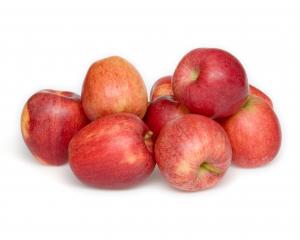
It's 8 o’clock in the morning, you’ve barely finished your coffee and your tummy tells you it’s time — time for a number two.
Although most people feel uncomfortable talking about it, pooing is such a mundane part of our lives and it’s safe to say everyone does it. Even our ancestors were involved in this daily activity, something we know not only from assumption, but also from the archaeological record.
Yep, that’s right — ancient poos from humans (and animals) have been found in several parts of the world, with the oldest, record-breaking human excrement dating to 50,000 years ago.
Most of us wouldn’t be too excited to dig up ancient dung, but for an archaeologist it is a true treasure.
For example, these poos — or palaeofaeces to use their scientific name — have taught us that our love for beer and cheese goes back to at least 2700 years ago. And did you know that one of the oldest pieces of evidence of human occupation in the Americas is, in fact, a bunch of poos?
In Aotearoa New Zealand, we can consider ourselves lucky as there is a relative abundance of palaeofaeces preserved from a range of animal species, including kuri (dogs) and humans. When Polynesians settled Aotearoa 750 years ago they were accompanied by kurī, and together they soon inhabited much of the country, leaving different types of evidence behind that now give us valuable insight into past people’s (and dogs’) lives.
So, what can we learn from archaeological excrements in Aotearoa?
The first thing we can do is use macro- and microscopic analyses in which we identify small particles by eye or microscope. Macroscopically, we can pick out small animal bones, shellfish fragments and plant remains (e.g. nuts and seeds) that generally don’t survive in other archaeological contexts. And by using microscopes we can identify even smaller particles such as plant pollen and spores, but also eggs from parasites that may have infected the depositor.
If we zoom in even further, we can look at molecules that are invisible to the eye, including DNA. In short, we extract DNA from a small subsample and sequence it — which is the process of turning DNA into readable data so we can identify what is inside. This technique can be very effective in determining who deposited the poo, for as dog and human faeces can be very similar in size and shape, they often can’t be distinguished based on that information alone.
Even more exciting is that we can use the same data to study (gut) health of the past.
Humans and animals do not just consist of their own cells, they also contain an abundance of bacterial cells. Many of these bacteria live inside our gut and are collectively known as our gut microbiome. When in balance, these bacteria are unharmful and play a major role in our health by positively impacting our immune system and digestion. However, the microbiome is dynamic and influenced by external factors such as the environment, diet and infections, that can cause an imbalance and make us more susceptible to diseases.
A preliminary study conducted at the University of Otago has proven exactly how valuable ancient poos are. DNA analysis of 20 palaeofaeces, recovered from Kaikōura archaeological sites by the North Canterbury Transport Infrastructure Recovery in partnership with Te Rūnanga o Kaikōura, has revealed that they were deposited by kurī rather than humans. Also, at least 10 microbial species were identified. Most of these species, such as Amedibacterium intestinale and Enterococcus faecium, were present in numerous samples and are associated with healthy guts.
Interestingly, we also identified a bacterial species that is a human pathogen, known as Shigella boydii. This species is a very contagious bacteria that causes shigellosis, a potentially lethal gut infection causing diarrhoea.
This disease only affects humans, and it needs us as a host to reproduce and survive, meaning that it would also have been present in the humans accompanying these dogs. So, despite these faeces were deposited by kurī, they even provide a snapshot of human health and disease in the past.
Who knew ancient poos could be so interesting?
Without them, we likely would not have identified these ancient bacterial strains that provide valuable and unique data that we cannot get elsewhere. It allows us to gain knowledge about human-pathogen interactions and co-evolution, and the role of other animal reservoirs, which ultimately helps in the ongoing treatment and eradication of diseases that are still affecting people today. So next time you walk the dog, instead of sending their poo to the landfill, you might want to consider burying it.
- The contest encourages Otago health science students to communicate with a general readership about their research. Entries came from throughout the university health sciences division and the School of Physical Education, Sport and Exercise Sciences.











